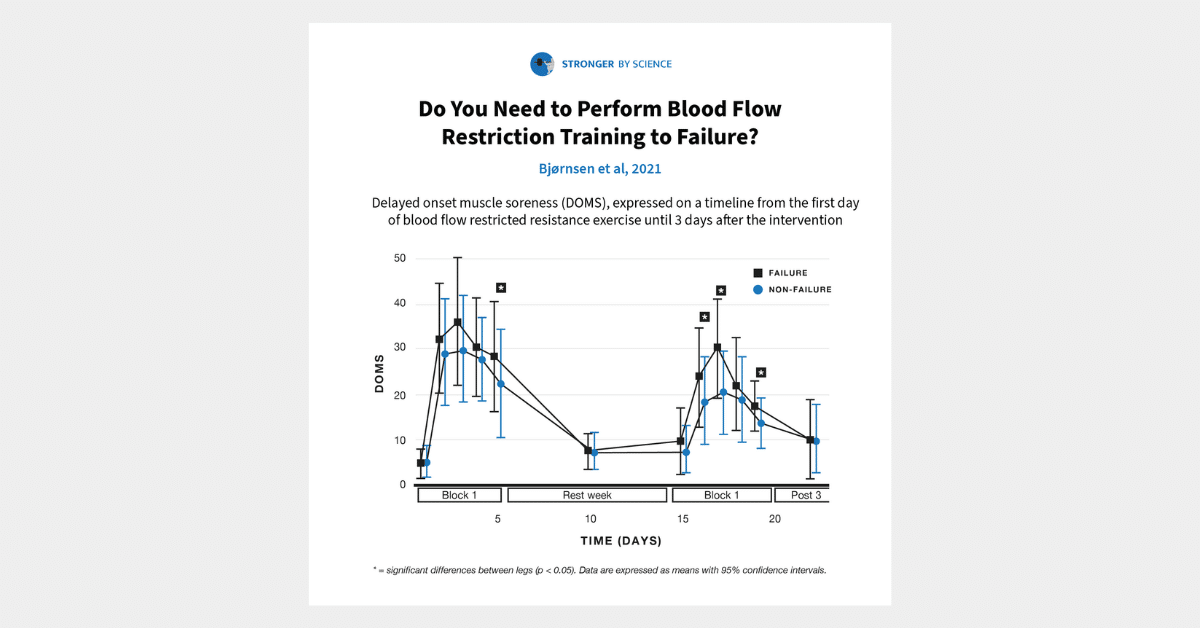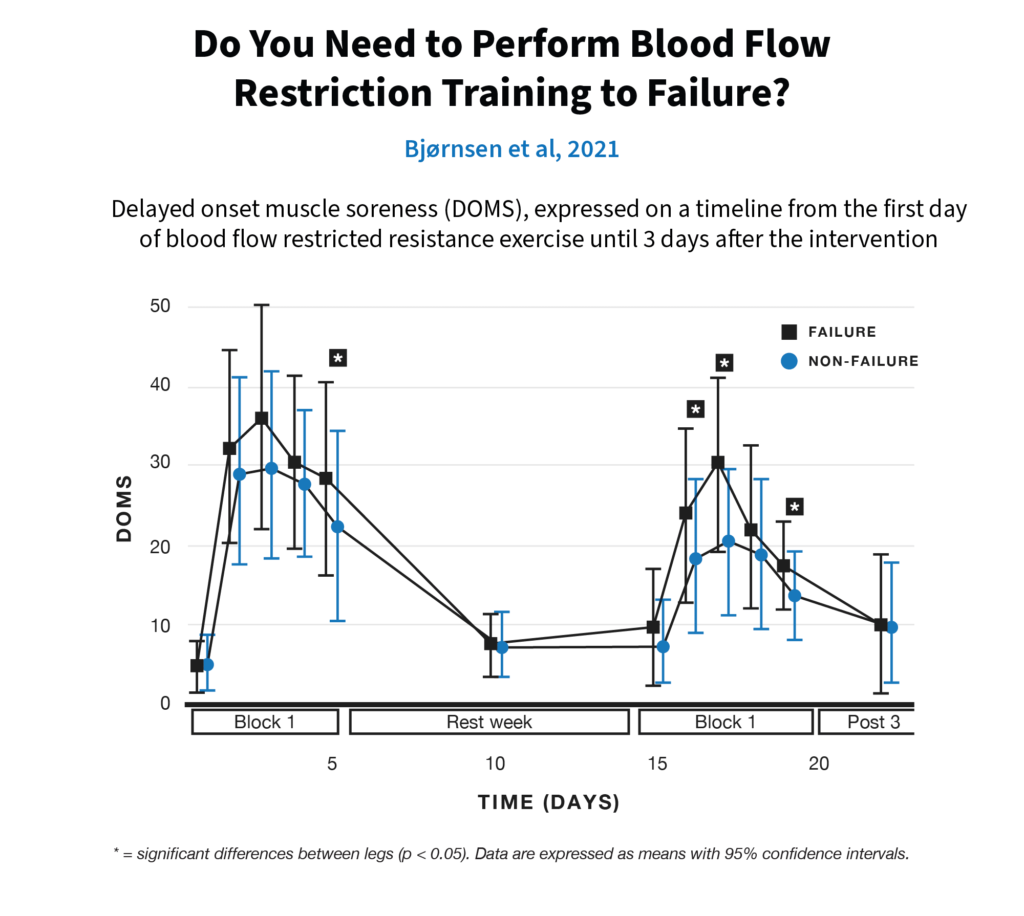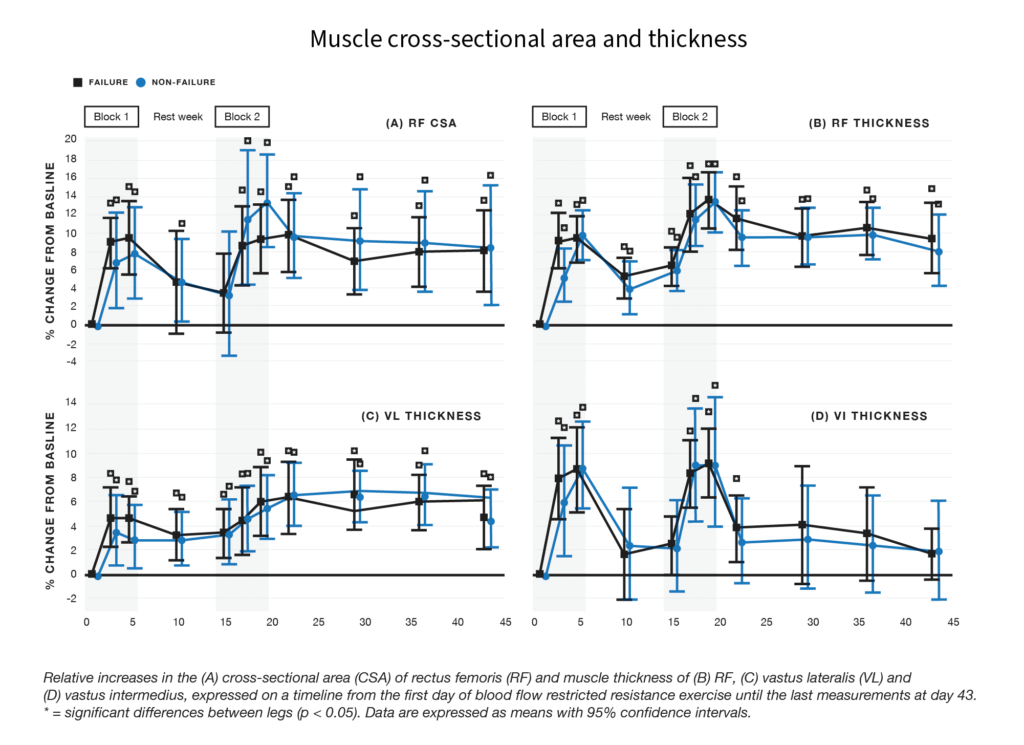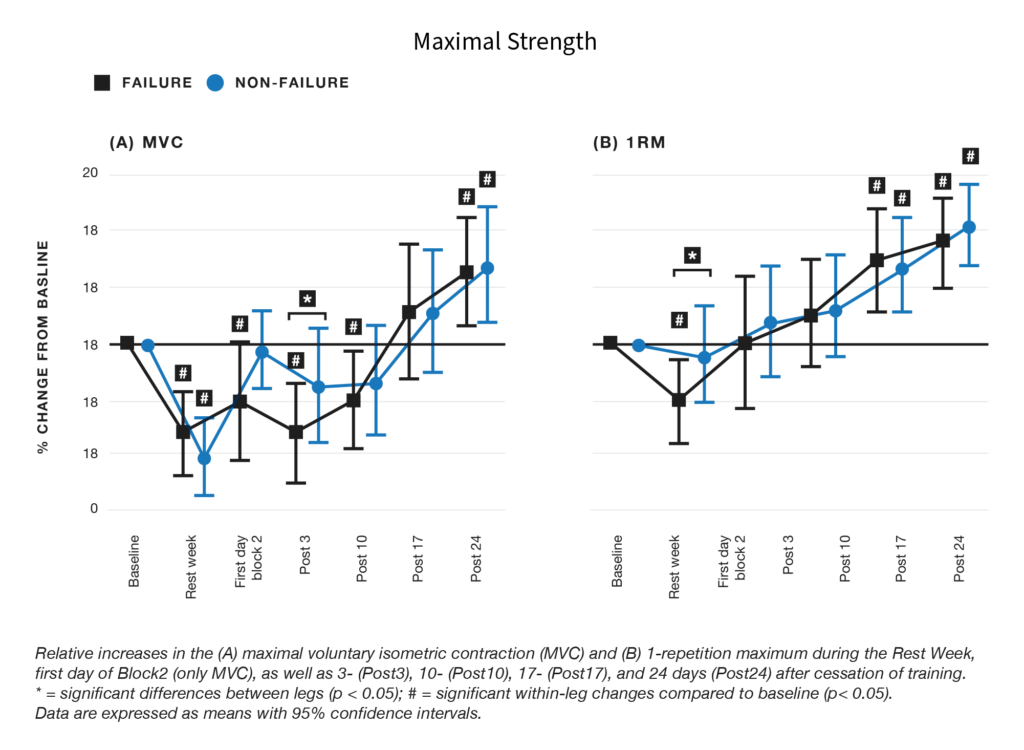In the fitness industry, blood flow restriction (BFR) training is virtually synonymous with low-load training to concentric failure. You occlude venous blood flow of the limbs being trained, use a load between 20-40% of 1RM, and simply do a bunch of reps until you eventually fail. However, in the literature, many of the studies (perhaps most of the studies) investigating the effects of BFR training on hypertrophy use a training protocol that doesn’t involve training to failure: the “classic” BFR protocol used in research is one set of 30 reps, followed by three sets of 15 reps, with 30 seconds of rest between sets (often referred to as the 30-15-15-15 protocol). This protocol seems to be effective for promoting hypertrophy, but BFR training to failure also seems to be effective for promoting hypertrophy. So, is one option clearly superior? A recent study by Bjørnsen and colleagues set out to answer that question.
17 untrained men completed the study. The researchers employed a within-subject unilateral design, meaning each subject served as their own control. Within each subject, one leg trained blood flow restricted knee extensions to failure (four sets to concentric failure), and one leg trained blood flow restricted knee extensions using the 30-15-15-15 protocol with no deliberate intention to reach failure. The training protocol mirrored that of a prior study by Bjørnsen and colleagues that we previously reviewed in MASS. Briefly, subjects completed two intensive five-day training blocks, with 10 days of rest between blocks. During each training block, they did blood flow restricted knee extensions once per day during days 1-3, and twice per day during days 4 and 5 (performing seven training sessions over five days). Before the start of training, throughout the training process, and up to 24 days after the final training session, researchers collected a variety of measures, including knee extension 1RM and maximum voluntary isometric contraction strength, muscle soreness, whole-muscle size (rectus femoris and vastus lateralis thicknesses and cross-section areas, assessed via ultrasound), and muscle fiber size and myonuclei content (via muscle biopsies).
Before discussing the results, it’s worth noting that the 30-15-15-15 protocol resulted in training to failure for some of the participants, especially during the first block of training. If you complete all of the assigned reps in the 30-15-15-15 protocol, you’d end up performing 75 total reps. However, during the first block of training, the non-failure legs completed an average of 70 reps per session, and during the second block of training, they completed an average of 74 reps per session. In other words, some of the subjects reached failure on their fourth set during the first block of training (between 4 and 10 subjects per training session), and a handful of the subjects reached failure on their fourth set during the second block of training (between one and three subjects per training session). However, the two training protocols were still pretty distinct – the failure protocol involved four sets to failure in every training session, while the 30-15-15-15 protocol only resulted in one set to failure during each session of the first block for about half of the subjects, and zero sets to failure during each session of the second block for most of the subjects.
For the most part, the two protocols produced similar outcomes. Myonuclei and satellite cell responses were similar in both conditions, changes in muscle thicknesses and cross-sectional areas were similar in both conditions, and strength gains were similar in both conditions. However, the failure protocol resulted in more total reps performed, greater perceived exertion during training, greater perceived pain during training, greater soreness at various time points during both training blocks, and reductions in type I muscle fiber cross-sectional area (interestingly, neither protocol resulted in significant hypertrophy of either type I or type II fibers). As with the Bjørnsen study we previously reviewed, a delayed supercompensation effect was observed for measures of muscle strength. Immediately following the second training block, maximal voluntary isometric contraction strength was a bit depressed below baseline, and 1RM knee extension strength didn’t significantly differ from baseline. However, both measures continued to increase for at least 24 days after the end of the training protocol, eventually resulting in significant improvements from baseline.
Overall, I view this study as a pretty big win for non-failure BFR training. All outcomes were either similar between conditions, or superior with non-failure BFR training, in spite of the fact that soreness, perceived exertion, and total reps performed were lower with the non-failure protocol. You may be apprehensive about taking too much away from this study since the subjects were untrained, but it’s worth noting that the present study doesn’t exist in a vacuum. The 30-15-15-15 protocol has been proven effective in trained subjects as well, and other research suggests that low-load BFR training can cause substantial cellular and energetic stress (especially to type I muscle fibers). Multiple sets of low-load BFR training may simply be unnecessary at best, and excessive at worst. For now, if you want to do low-load BFR training, I think the classic 30-15-15-15 protocol (with 30 seconds of rest between sets) would be a good place to start. Various studies use 20-40% of 1RM, but as a general rule, I think you should select a load where the fourth set either reaches failure or gets very close to failure. If you feel like you still have more than 2-3 reps in reserve after the fourth set, go a bit heavier, and if you fail during the third set, go a bit lighter.
Credit: Graphics by Kat Whitfield.







